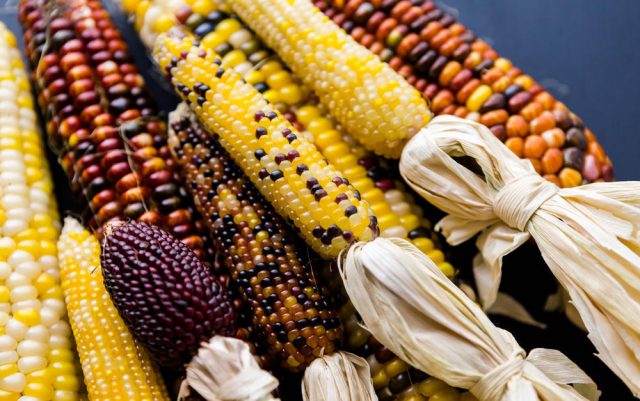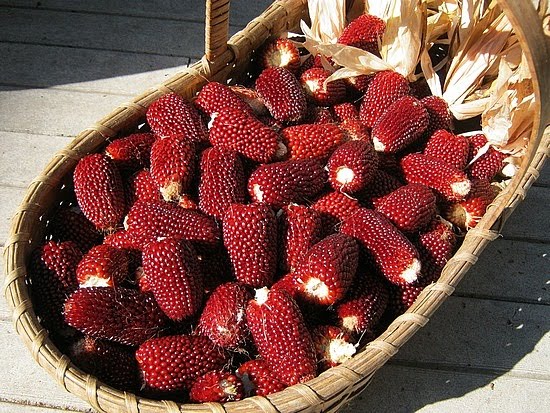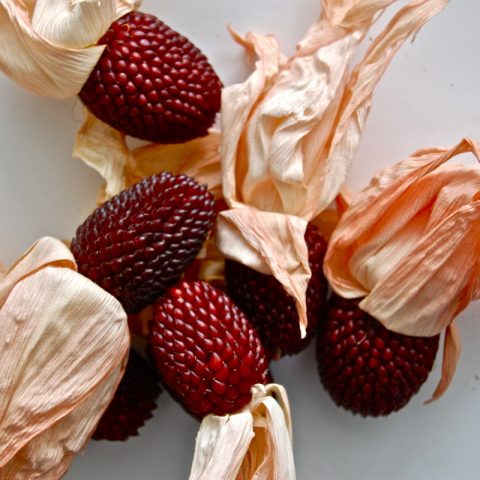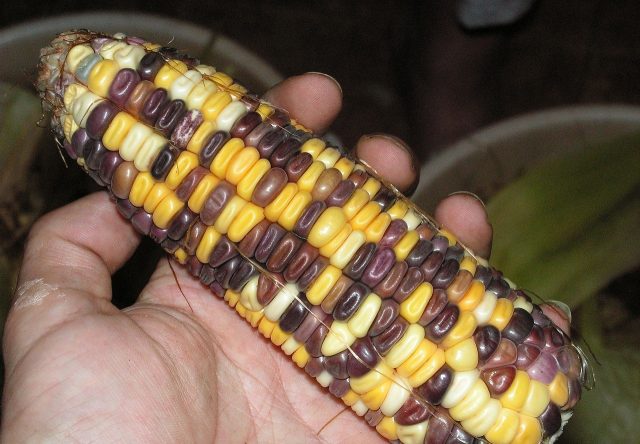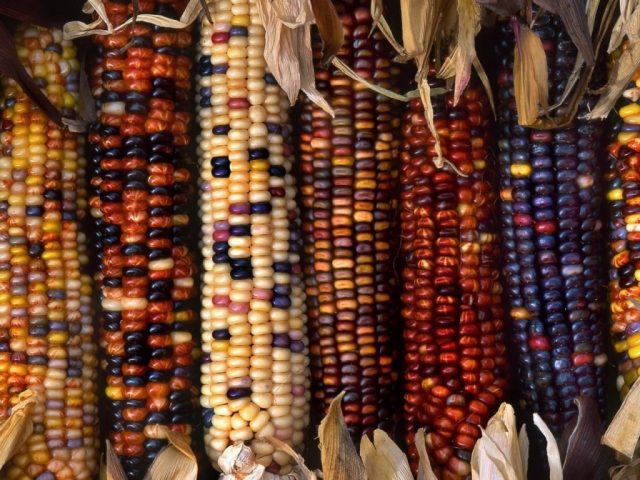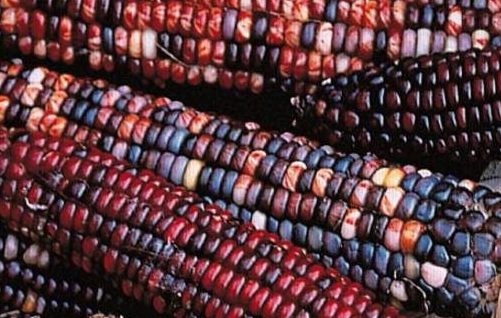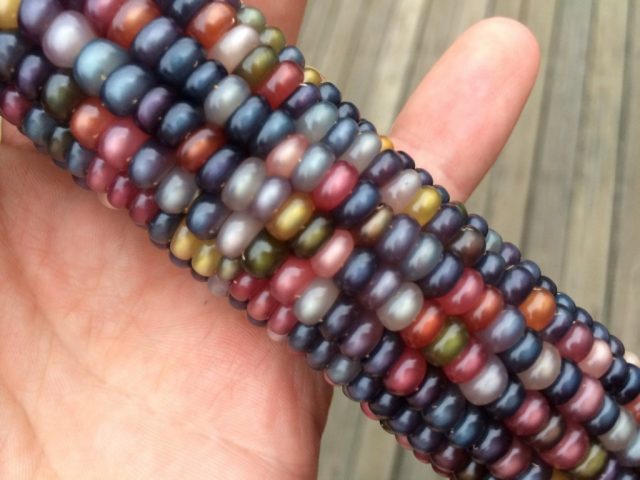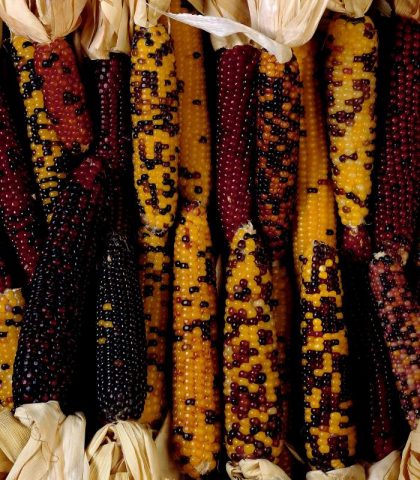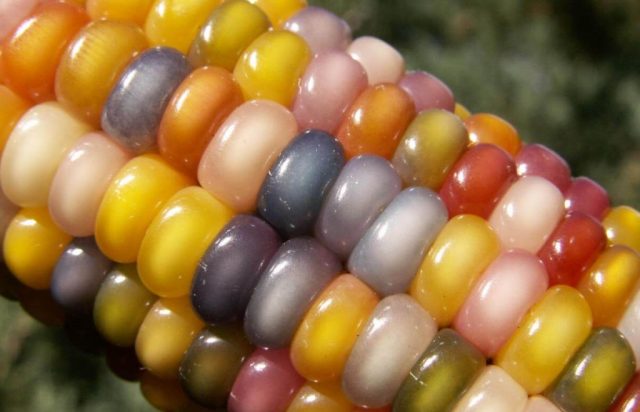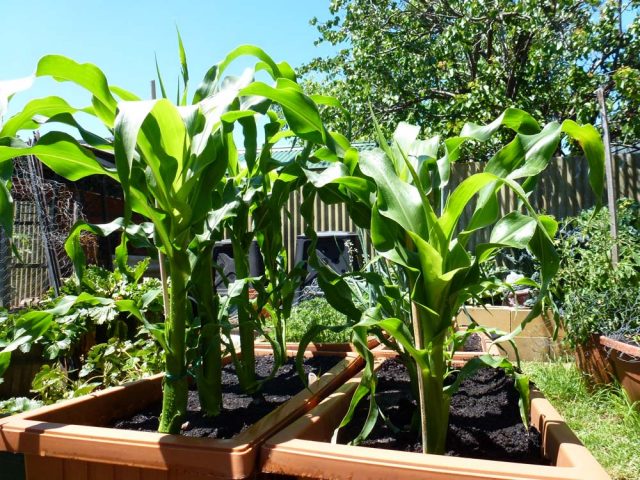Content
Ornamental corn has recently become super popular with farmers around the world, although the cultivation of such varieties has been known since the pre-Columbian era. Private gardeners and large companies are engaged in the cultivation of bright, unusual species and their further selection. Beautiful plants and variegated ears are very attractive to look at.
Can I eat ornamental corn?
The amount of starch in ornamental corn exceeds 75%. Due to such a high polysaccharide content, ripe grains are very dense and do not soften during heat treatment. Fully ripe corn is crushed and added to baked goods. Popcorn is made from colored grains.
Ornamental corn is not only edible but also healthy. The chemical composition of grains is rich in such important substances for humans:
- magnesium;
- manganese;
- potassium;
- calcium;
- iron;
- copper;
- zinc.
Corn, both ordinary and decorative, is a source of vegetable proteins (about 15%). The low content of fats (up to 5.1%) and sugar (from 1.5 to 3.5%) makes it possible to use the culture for dietary and baby food.
Unripe decorative cobs, harvested at the stage of milk maturity, taste the same as ordinary corn. Most of the useful elements are preserved during heat treatment.
Description of varieties of ornamental corn
Corn is an annual crop of the family of cereals, the decorative species of which differ from ordinary varieties in the appearance of the leaves, the color of the grains, and the size of the cobs. The American continent is considered the birthplace of corn with an unusual color. Reviving the varieties that were still cultivated by the Maya and Aztecs, breeders create various decorative species that are very popular with modern gardeners.
Strawberry
The stems of corn variety Strawberry rarely grow above 1 m. With abundant feeding, watering and sufficient lighting, the growth of adult plants can reach 1.5 m. Thin bright green leaves with longitudinal white stripes are very decorative and give the plantings an exotic look.
On the stems, medium cobs are formed, no more than 10 cm in length and up to 8 cm in diameter. Grains are red-brown, shiny, bright. The appearance of the cob gave corn its name, because the caryopsis fruit resembles a strawberry berry tapering towards the tip in shape.
When planted in May, the ear will be fully ripe at the end of August. Until that time, milk grains have a sweet corn flavor and can be eaten. The ripened dense grain is ground to a state of flour, with a natural purple color.
Strawberry meadow
An original variety of red corn with a stem height of 1.2 to 1.5 m. In the axils of ribbon-like striped leaves, from 3 to 5 ears per plant are formed. The coverings of the fruit also have white stripes; when ripe, their color becomes monotonous, beige.
The color of the seeds is burgundy. The grains have a pointed tip and are stacked like a large bump. The size of the cob varies from 8 to 12 cm with a diameter of 6-8 cm.The average weight of the fruit is 70 g.
Planting ornamental corn Strawberry meadow creates beautiful ensembles in open flower beds.The variety is used as a hedge or background for flower arrangements; cobs are used in interior design.
Mosaic
The popular variety of colored ornamental corn is especially loved by decorators and florists. The mosaic bears grains on the cob from golden to black color. The unique variegated fruit pattern includes white, yellow, brown tones. Plant sizes are compact: corn stalks grow just over 1 m.
In addition to decorativeness, Mosaic has a high nutritional value. Grains can serve as a source of a variety of natural pigments in cooking. The decorative variety has another practical application - it is often used for fattening valuable breeds of poultry.
Montana Multicolor
The original coloration of the ears is the main advantage of the variety. It is impossible to predict the combinations of multi-colored grains, which often do not belong to the same color scale. Blue, red, white, golden yellow, bright orange color with many additional shades can be found on the same cob.
Only 2 inflorescences are formed on the stem, from which caryopses up to 20 cm long develop. To reach ripeness, the variety requires a vegetation period of about 110 days. The decorativeness of the Montana Multicolor variety is highly valued in floristry, which makes it one of the most popular in Europe.
Indian giant
The name clearly indicates the main distinguishing characteristic of the variety. Ornamental corn is distinguished by atypically large fruit sizes and trunk growth of about 2.5 m.Giant ears for ornamental corn grow up to 40 cm.
The diameter of the fruit is small, the shape is elongated, cigar-shaped. Colors and their combinations are different for each plant and are inconsistent in different seasons. Amazing combinations include, in addition to reds, yellows, white, blue tones, various derivatives of purple and even black.
The ripening period of the grains is 125 days. The plant is extremely thermophilic: at temperatures above + 20 ° C and good lighting, it does not need any care, except for occasional watering.
Gem
The multicolored maize is a medium-sized, sugary variety. The height of a strong stem, under favorable conditions, reaches 1.5 m, which makes it possible to form fences from plantings or protection from the wind for more delicate crops. The cobs are small in size.
The grains are staggered and can be colored brown, yellow, white and black in all kinds of combinations. The range of shades with such combinations turns out to be restrained, not flashy. Unripe grains are cooked and eaten in the same way as sugar maize. The decorative use of ripe fruits is popular.
The sugar content in the grains is high. Taste indicators at the stage of milk maturity are excellent.
Amero
The variety is decorative even at the stage of a green plant. The long, variegated leaves are tinged with yellows, reds and pinks. Amero looks good in group plantings. Designers recommend masking unsightly buildings and outbuildings behind the variegated hedges of such corn. A good solution would be a group planting of Amero in an open area, a lawn, which will give the garden a tropical look.
The ears are multi-colored, have an unusual pearl tint. Unripe grains contain little starch compared to other decorative varieties, so they stay soft longer when ripe.
Magic kaleidoscope
The stems of a tall variety of ornamental corn grow up to 1.8 m.The culture is resistant to major diseases and pests of cereals. From line plantings, beautiful temporary hedges are obtained that do not require special care.
The grains of one ear can have shades of any color, combining with each other at will. The starch content of the fruit is so high that it makes the ornamental variety unsuitable for eating. But thanks to this feature, designer compositions and bouquets with cobs are preserved for more than 12 months.
Rainbow
A distinctive feature of the variety is the leaves with bright yellow, pink and green stripes. Stems of ornamental corn in good light stretch up to 2 m. Plants perfectly decorate open areas of the garden. They are planted in groups, singly or with ribbons, like fences.
In August, cobs up to 0.5 m long are formed. The grains in one inflorescence can be of all shades of the rainbow, individual seeds have a mixed color, which explains the name of the decorative variety. Corn Rainbow is versatile, the plant is used from cooking to weaving from leaves.
Variegated ribbon
Another variegated decorative variety with small ears. The plant is compact - up to 1 m in an adult state. The color of green leaves has white, pink, burgundy stripes. The rosette of young plants resembles a huge exotic flower and adorns the site from June to September. The small, cylindrical ears carry large red grains suitable for culinary use.
Corn is extremely decorative, but it is distinguished by its demanding growing temperature. The germination of grains occurs actively if the soil is warmed up above 15 ° C.
Pearlescent miracle
The variety has a popular name - Japanese corn and is very popular with domestic gardeners. The leaves of this species are extremely beautiful: green plates are covered with orange, yellow, scarlet longitudinal stripes. Drooping variegated foliage adorns the garden from germination to autumn yield.
Stem height - up to 1.5 m, bright red seeds. To preserve the decorativeness of plantings, corn requires a distance of at least 45 cm between plants. The culture does not tolerate drafts, therefore it is not recommended to plant it in open, blown places.
Application of ornamental corn
Ornamental corn is versatile in use. Several ways to use different parts of the plant:
- Bright foliage adorns the beds and flower beds throughout the summer.
- Cobs of amazing color are added to dry bouquets, included in the decor of the premises.
- The leaves are dried for weaving, appliqués and artistic panels.
- The apical spikelet inflorescences are also decorative. Bouquets of them can serve as an interior decoration for more than six months.
Shading of ornamental corn plantings by tall stands or buildings is unacceptable. When planting near flowers or vegetable crops, take into account that the growing bushes also obscure the sun.
The beauty of certain types of cereals does not negate their nutritional value. Ornamental types of corn are used as usual: for cooking or as food for pets.
For the use of milk cobs, they are boiled for about an hour and served with butter, salt or without additives. Ripe, hard grains are ground into flour for use in baking. Ornamental varieties can dye baked goods in a variety of colors. So the addition of strawberry corn flour gives the dough a pleasant pink hue.
When and how to plant ornamental corn
The agricultural technique of growing ornamental varieties of corn is similar to fodder and sugar varieties. The main difference comes from the thermophilicity of bright plants with colorful grains.This feature requires the use of a seedling method when growing in areas with cool, short summers. So it is possible to extend the growing season and get ripe ears until a steady cooling.
Stages of growing ornamental corn seedlings:
- To preserve the delicate roots when transferred to the garden bed, peat pots are harvested for planting.
- The soil mixture should be light, consisting of garden soil, sand, compost with the addition of wood ash.
- The grains are heated in the sun for several days and then soaked for a day.
- Place 2-3 seeds in each glass.
- It is important to keep the room temperature around + 18 ° C before germination.
The emerging seedlings are watered as the soil dries up. As they grow, thin, weak seedlings are removed - only one sprout should be left per pot. You can take out corn to a permanent place no earlier than the soil in the beds or flower beds warms up to + 13 ° C.
Strawberry corn, when grown from seeds in a seedless way, is prepared in the standard way: by heating and soaking for swelling. The soil for planting should be dug up, fertilized, loosened. The holes for corn are placed at a distance of 40 cm. When planting in several lines, leave 60 cm between the rows, since the Strawberry variety requires good ventilation for high-quality pollination.
Ornamental corn care
If the place is chosen correctly: there is enough sunlight and there are no cold drafts, then minimal maintenance will be required.
Necessary measures:
- Watering. Produce as the soil dries up. At each watering, at least 10 liters of water are added under the plant.
- Top dressing. Irrigation is often combined with soil fertilization. Complex preparations are mixed with water for irrigation according to the instructions.
- Deleting weeds promotes the harmonious development of decorative species. Therefore, the beds should be kept clean or mulched.
Ornamental corn is fertilized at least twice a season: during flowering and after the formation of young cobs. For such feeding, 1 tsp is enough. nitroammophoska for one plant, diluted with 10 liters of water. Ornamental corn varieties are very sensitive to soil acidity. If necessary, to restore the neutrality of the soil, in the fall or spring, calcium preparations or slaked lime are added for digging.
With a lack of phosphorus, the leaves turn brown, without nitrogen they begin to shrink. Lack of potassium will appear as "burnt" edges, dried lower leaves of brown color.
Side shoots that appear on the trunk should be carefully removed. Strawberry corn and all kinds of ornamental cereals are periodically treated with systemic fungicides to prevent pest attacks.
Conclusion
Ornamental corn, in addition to its direct purpose, as a valuable food product, also plays an aesthetic role. Bushes of many varieties are so beautiful and unusual that they can decorate the best greenhouses and parks. Colored grains delight with unexpected shades and are able to surprise even experienced gardeners every season.
